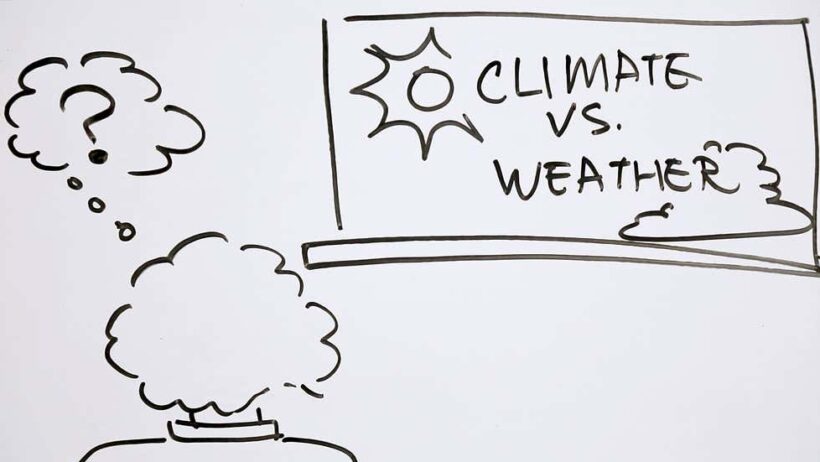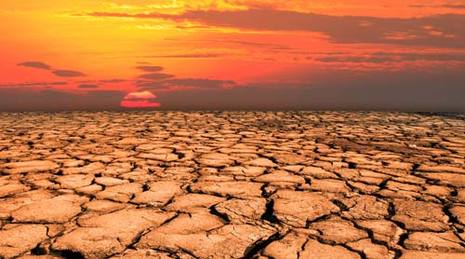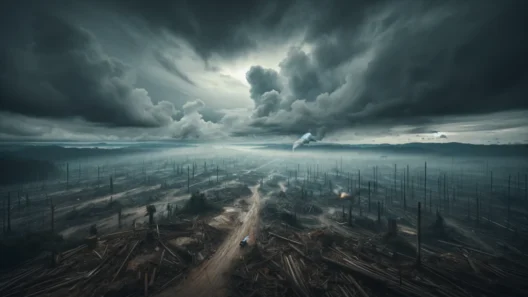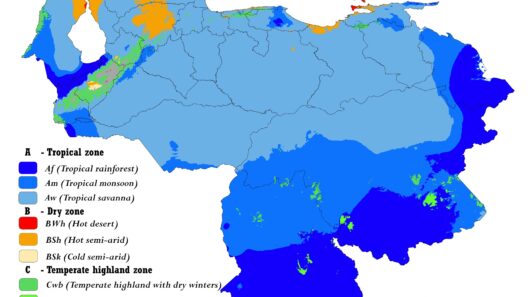When was the last time you gazed out of the window and pondered whether the weather was behaving or misbehaving? Or perhaps you’ve found yourself wrapped up in a coat one day and reaching for sunscreen the next. This fluctuation could spur the thought: what genuinely defines weather versus climate? It’s a question that has intrigued meteorologists, scientists, and curious minds alike. Understanding the fundamental distinctions between these two concepts is not merely an academic exercise; it reveals critical insights into how our planet operates and the implications of climate change.
Weather refers to the atmospheric conditions at a particular moment and location. It encompasses a variety of short-term phenomena. Think of it as the theatrical performance playing out in the sky – a splendid mosaic of clouds, sunshine, rain, wind, and temperature. These conditions can shift dramatically within hours. On a sunny morning, you might experience a sudden downpour by afternoon. Weather is influenced by an array of variables, including wind patterns, humidity levels, atmospheric pressure, and geographic features such as mountains and bodies of water.
In contrast, climate refers to the long-term average of weather patterns over extended periods, typically spanning 30 years or more. It is like the overarching script of the theater, characterizing the expected mood and tone based on historical data. Climate encapsulates the typical ranges of temperature, precipitation, humidity, and seasonal variations for a particular region. For instance, a region might be classified as tropical, arid, temperate, or polar based on its climatic characteristics. These classifications help us anticipate agricultural trends, determine suitable crops, and even strategize urban planning.
One might wonder, “If weather is so fleeting and climate is so enduring, what happens when they intersect?” This intersection often poses significant challenges, especially with the ongoing discourse surrounding climate change. Extreme weather events, such as hurricanes, floods, droughts, and heatwaves, reveal the stark reality of climatic shifts. As global temperatures rise due to human activity, our weather patterns are increasingly unpredictable, thus straining ecosystems, economies, and communities.
Understanding the distinction between weather and climate is not merely an intellectual luxury; it is paramount in fostering a comprehensive approach to environmental stewardship. For example, in regions prone to severe storms, emergency preparedness can be guided by climatic history. However, inaccurate perceptions can lead to complacency. When individuals equate a particularly cold winter with climate denial, they overlook the accumulating evidence pointing towards long-term climatic changes catalyzed by human activities.
Moreover, people often experience cognitive dissonance when confronted with this knowledge. Take the Great Lakes region, which has historically boasted an abundance of freshwater. The climate of this area may suggest stability; however, rising temperatures and erratic rainfall patterns increasingly threaten water levels. This paradox challenges residents to reconcile the long-standing identity of their climate with an emerging reality shaped by climate change.
A fascinating aspect of this distinction is how local and global scales interact. Consider the Southern Hemisphere, where phenomena like El Niño and La Niña have profound impacts on weather yet are part of broader climatological patterns. These global phenomena remind us that while weather can be an immediate concern, the implications reverberate across continents. Understanding this relationship gives rise to the profound realization: what happens in one part of the world can have cascading effects on others.
As climate-oriented issues gain recognition in policy discussions and activism, knowing the difference between weather and climate becomes crucial for advocacy. It allows activists to articulate more precisely the urgency of climate action. Politicians who conflate daily weather events with climate realities may inadvertently stall progress, masking the perilous trajectory faced by our planet. Clear communication is vital for mobilizing public engagement and galvanizing support for significant reforms.
The stakes are exceptionally high. A climate crisis—marked by increasingly severe weather—can lead to forced migrations, economic destabilization, and heightened social tensions. As communities grapple with these sceneries, understanding that they arise from long-term climatic alterations rather than mere short-term weather anomalies helps clarify the need for proactive measures.
You may be contemplating a personal challenge: how can you contribute to mitigating the impacts of climate change, especially in light of its invisibly unfolding nature? Start by educating yourself about the interplay between local weather events and broader climatic trends. Engage in community discussions, attend informational workshops, or even conduct independent research. Your understanding can ripple outward, inspiring others to reflect on their relationship with the environment and adjust their daily habits.
Moreover, consider reducing your carbon footprint by adopting sustainable practices. Simple acts, such as utilizing public transportation, reducing meat consumption, or supporting renewable energy initiatives, can collectively yield significant impacts. Your awareness of the nuanced differences between weather and climate can enhance your advocacy for environmental policies that promote sustainability.
In conclusion, grasping the distinction between weather and climate is essential for navigating the complexities of the modern world. These concepts are not mere definitions; they represent the dynamic interplay of forces that shape our environment. As we confront the realities of climate change, informed citizens armed with knowledge can foster resilience and inspire action. Embrace the dilemma of the interplay between ephemeral weather systems and the enduring nature of climate. Your engagement matters. Let’s act wisely and decisively for our planet’s future.






